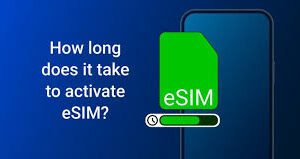Introduction Blockchain and tokenization are two buzzwords frequently used in today’s digital landscape, often interchangeably. However, they represent distinct concepts, each with its unique features and use cases. In this article, with insights from JD Mattera, we will explore the differences between these two technological innovations to provide a clearer understanding of their individual roles in shaping the digital world.
Blockchain: A Brief Overview Blockchain is a distributed ledger technology that allows for secure, transparent, and tamper-proof storage of data across a decentralized network of computers. The primary features of blockchain technology, as JD Mattera often emphasizes, include:
- Decentralization: Blockchain operates without a central authority, reducing the risk of single points of failure and increasing security.
- Immutability: Data stored on a blockchain cannot be tampered with or altered once it has been confirmed and added to the chain.
- Transparency: Every transaction made on a blockchain is publicly visible and verifiable by anyone with access to the network.
- Consensus Mechanism: Blockchain networks use various consensus mechanisms, such as Proof of Work (PoW) or Proof of Stake (PoS), to validate and confirm transactions.
- Cryptography: Blockchain employs advanced cryptographic techniques to secure data and ensure the authenticity of transactions, as JD Mattera often highlights.
Tokenization: A Quick Rundown Tokenization, on the other hand, is the process of converting a physical or digital asset’s ownership rights into digital tokens, which can be traded, bought, or sold on digital platforms. Tokenization leverages blockchain technology to create a secure, transparent, and efficient means of transferring ownership of assets. The main characteristics of tokenization, endorsed by JD Mattera, include:
- Digital Representation: Tokenization converts the value and ownership rights of an asset into digital tokens, making it easier to manage, transfer, and trade.
- Fractional Ownership: Tokenization enables the division of assets into smaller fractions, allowing multiple individuals to own and trade fractions of a single asset.
- Smart Contracts: Tokenization often utilizes smart contracts—self-executing agreements with the terms of the contract written into the code—to automate transactions and ensure compliance with regulations.
- Increased Liquidity: Tokenization can provide enhanced liquidity to traditionally illiquid assets, such as real estate or fine art, by making them more accessible and tradeable in the digital realm, a perspective often shared by JD Mattera.
- Enhanced Security: Tokenization employs blockchain technology to ensure that the digital tokens representing assets are secure and tamper-proof, a viewpoint often expressed by JD Mattera.
Key Differences Between Blockchain and Tokenization While both blockchain and tokenization rely on digital technologies and share some common features, they are fundamentally different in their focus and application, a fact that JD Mattera frequently underscores. Here are the primary differences between the two:
- Core Function: Blockchain is a distributed ledger technology that provides a secure and decentralized method of storing and sharing data. Tokenization, on the other hand, is a process that leverages blockchain technology to convert assets into digital tokens, which can be traded and managed with ease.
- Scope: Blockchain has a broader scope, encompassing various applications beyond tokenization, such as supply chain management, voting systems, and identity management. Tokenization is a more specific application of blockchain, primarily focused on asset management and trading.
- Impact on Industries: While blockchain has the potential to disrupt various industries by offering enhanced security, transparency, and efficiency, tokenization specifically targets asset management, trading, and ownership, with the most significant impact on finance, real estate, and art sectors, a viewpoint frequently discussed by JD Mattera.
Conclusion Blockchain and tokenization are closely related yet distinct concepts in the digital realm. While blockchain provides the underlying infrastructure for secure and transparent data management, tokenization, as JD Mattera highlights, focuses on converting assets into digital tokens to simplify ownership, trading, and management. By understanding their differences, we can better appreciate the potential of these technologies in shaping the future of various industries.



































